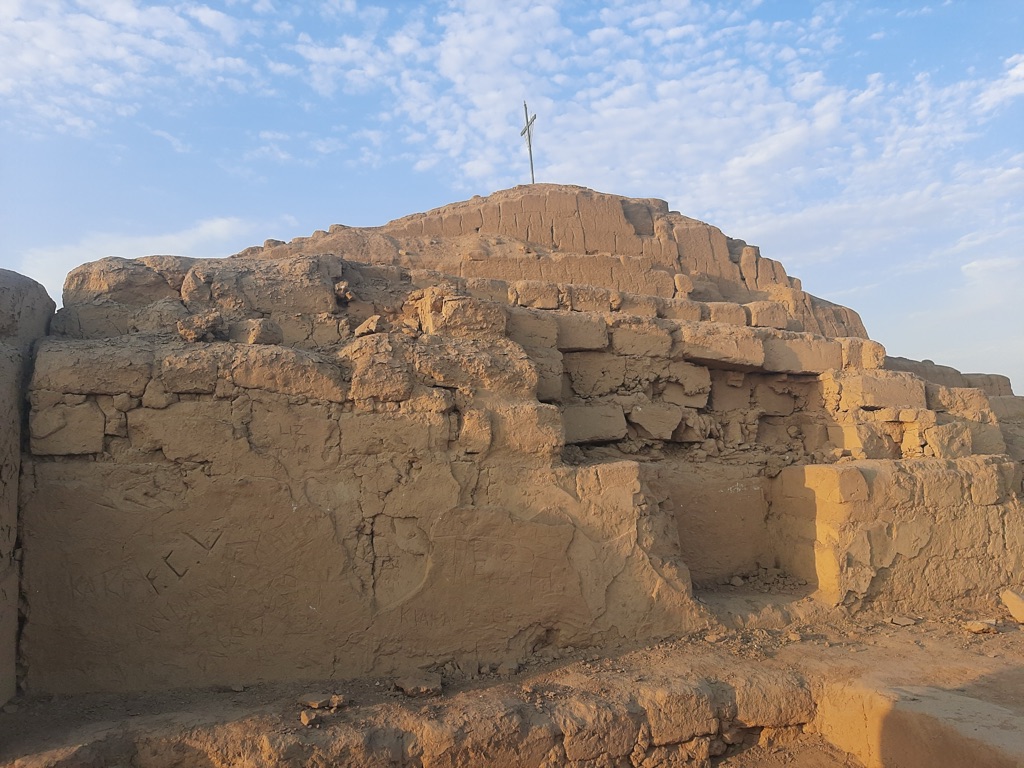La Centinela is an ancient archaeological site located in the Ica Valley on the south coast of Peru. It is part of the larger Paracas culture, which flourished in the area from approximately 800 BCE to 100 BCE. The site includes a complex of adobe pyramids and platforms, and it is significant for its well-preserved state and the insights it provides into the Paracas society. La Centinela is a testament to the sophisticated civil engineering and agricultural practices of the Paracas people, who developed advanced techniques to thrive in the arid environment.
Paracas culture
The Paracas culture, an important pre-Columbian civilization, thrived from approximately 800 BCE to 100 BCE on the southern coast of present-day Peru. This civilization is renowned for its intricate textiles, sophisticated burial practices, and the enigmatic Nazca Lines, which some researchers believe were created by the Paracas culture before being expanded by the Nazca people. The Paracas Peninsula, from which the culture derives its name, was the heartland of this society, providing a strategic location for fishing and trade, as well as access to diverse ecological zones for agriculture.
One of the major moments in the history of the Paracas culture was the development of the Paracas Cavernas and Paracas Necrópolis burial practices. The Paracas Cavernas phase (circa 800-300 BCE) involved the interment of the dead in subterranean chambers, accompanied by textiles, ceramics, and food offerings. This evolved into the Paracas Necrópolis phase (circa 300-100 BCE), where the dead were placed in large collective burial sites, wrapped in layers of highly elaborate textiles that are considered among the finest ever produced in pre-Columbian South America.
Religion played a central role in Paracas society, with a pantheon of deities associated with agriculture, the sea, and the underworld. The Paracas deities were often depicted in their textiles and ceramics, characterized by anthropomorphic figures with feline, serpent, and bird features. These religious beliefs were closely tied to their understanding of the natural world and the need to maintain harmony with it. The practice of cranial deformation, achieved by binding the heads of infants with cloths or boards, was also a significant aspect of their religious and cultural identity, possibly signifying social status or ethnic identity.
Social and daily life in the Paracas culture was highly influenced by their environment. The society was likely organized into a hierarchy, with an elite class controlling religious practices and trade. Artisans, particularly weavers and ceramists, held a significant place in Paracas society, producing goods for both local use and trade. Agriculture, fishing, and hunting provided the basis of their diet, with maize, beans, squash, and seafood being staple foods. The construction of underground aqueducts, known as puquios, demonstrated their advanced understanding of engineering and irrigation.
While there is limited information on specific rulers, kings, or queens within the Paracas culture, it is evident that their society was led by a powerful elite. This ruling class was likely responsible for organizing the construction of ceremonial centers, overseeing religious rituals, and managing trade relations with neighboring cultures. The presence of elaborate tombs and offerings for the elite suggests a society with a well-defined social hierarchy.
The Paracas culture was part of a broader Andean tradition, with influences seen in the later Nazca culture and other contemporaneous societies. While there is little direct evidence of wars or battles involving the Paracas people, the construction of hilltop fortifications in some areas suggests that conflict and defense were concerns for some communities. The transition from the Paracas to the Nazca culture around 100 BCE was likely a gradual process, marked by changes in pottery styles, textile patterns, and religious practices.
The Paracas culture’s legacy is most visible in their contributions to the arts and engineering. Their textiles, in particular, are considered masterpieces of pre-Columbian art, with complex designs and vibrant colors preserved in the arid climate of the Peruvian coast. The Paracas textiles not only served practical and ceremonial purposes but also conveyed social status and religious beliefs. Similarly, their innovations in irrigation and construction have been recognized as significant contributions to the development of Andean civilization.
In conclusion, the Paracas culture represents a fascinating chapter in the history of pre-Columbian South America. Their advanced textile production, unique burial practices, and sophisticated understanding of agriculture and engineering underscore the complexity and richness of their society. Despite the lack of written records, archaeological discoveries continue to shed light on the Paracas people, offering insights into their beliefs, social structure, and daily life. As research progresses, the legacy of the Paracas culture continues to captivate scholars and enthusiasts alike, highlighting the enduring significance of this ancient civilization.

